Effects pedals have a transformative impact on the tone, color, and characteristics of a guitar. Along with the particular amplifier and guitar model you choose, pedals are extremely important if you want to take control of your guitar’s output.
In this article, I’ll be discussing octave pedals. Pitch-shifting is an excellent way to add layers to your tone, opening up a whole new realm of possibilities. It’s an effect that has been popularized by some of the most iconic guitarists in recording music history and continues to be a staple on pedalboards today.
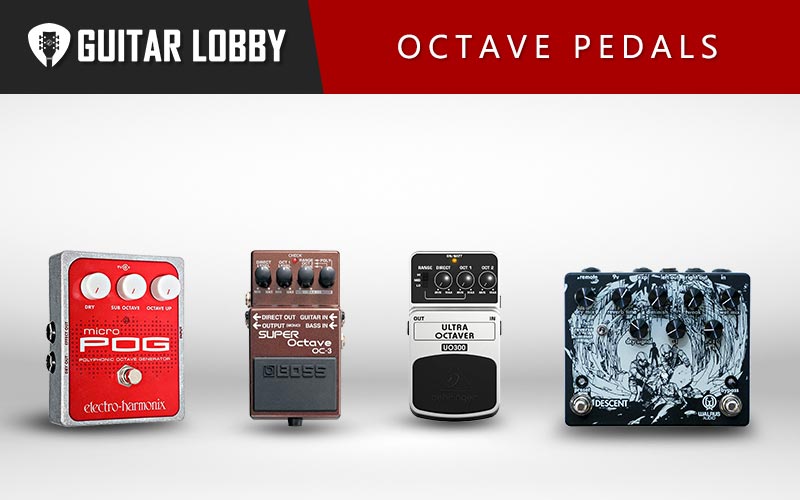
There’s a whole host of octave pedals out there, each with different characteristics and capabilities. When searching for a new pedal, it can be overwhelming trying to sift through the options to find the best-suited addition to your guitar rig. Whether you want an octave pedal that will add a layer of thickness underneath your clean guitar tone, or you want to push your sound to the extremes with unusual intervals and harmonization, this list will include the perfect pedals for you.
I’ll start this article by reviewing the best octave pedals at each price point, but you’re unfamiliar with octave pedals and want to learn more before reading reviews, I’ve included an in-depth buying guide at the bottom of the article here. In the guide, I explain everything you need to know about the effect so that you can make an informed decision.
| Name of Product | Image of Product | Description | Price Range | Full Review |
|---|---|---|---|---|
| 1. Electro-Harmonix Micro POG (Best Overall) | 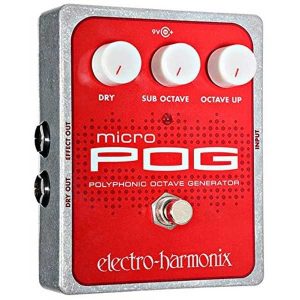 | Type: Digital Effects: Octave, Pitch Shift | $280 | Read Full Review Below |
| 2. Digitech DROP (Best Value) | 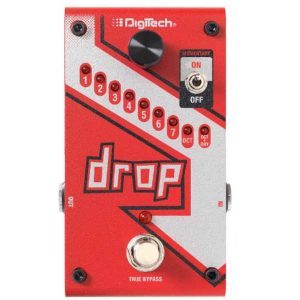 | Type: Digital Effects: Octave | $215 | Read Full Review Below |
| 3. Boss OC-3 (Best Under $150) | 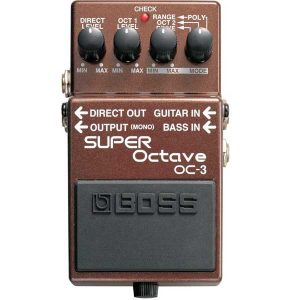 | Type: Digital Effects: Octave | $135 | Read Full Review Below |
| 4. Neewer Digital Octave (Best Under $50) | 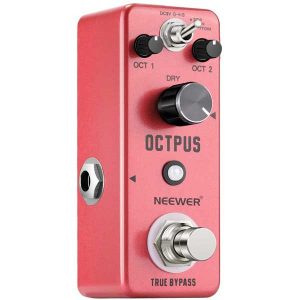 | Type: Digital Effects: Octave | $40 | Read Full Review Below |
| 5. Electro-Harmonix Pitch Fork | 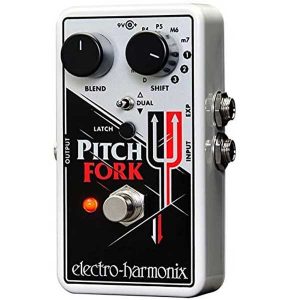 | Type: Digital Effects: Octave | $175 | Read Full Review Below |
| 6. Digitech Whammy (5th Gen) | 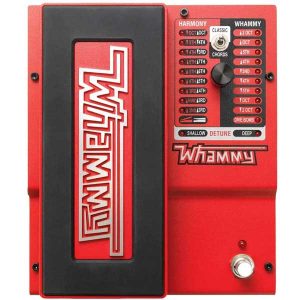 | Type: Digital Effects: Octave | $220 | Read Full Review Below |
| 7. Koogo Harmonizer | 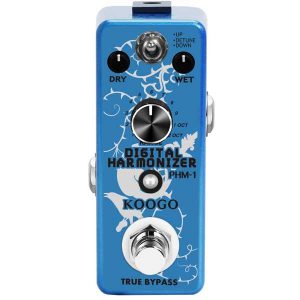 | Type: Digital Effects: Octave | $45 | Read Full Review Below |
| 8. Ammoon Precise Octa | 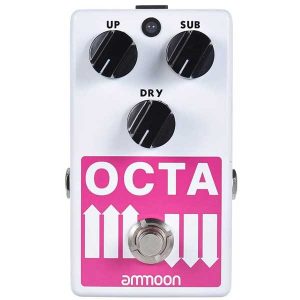 | Type: Digital Effects: Octave | $70 | Read Full Review Below |
| 9. Earthquaker Devices Rainbow Machine | 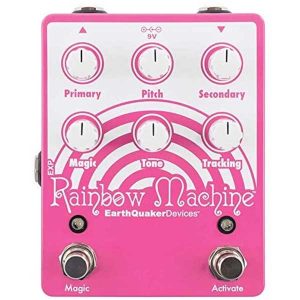 | Type: Digital Effects: Octave, Delay, Chorus | $230 | Read Full Review Below |
| 10. VSN Precise Octpus | 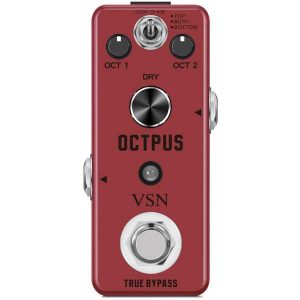 | Type: Digital Effects: Octave | $45 | Read Full Review Below |
| 11. Digitech Mosaic | 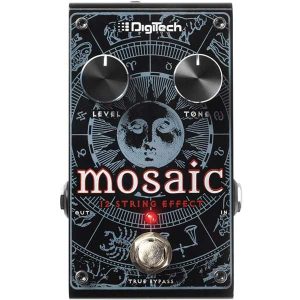 | Type: Digital Effects: Octave | $150 | Read Full Review Below |
| 12. Behringer Ultra Octaver U0300 | 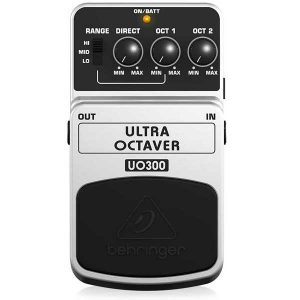 | Type: Digital Effects: Octave | $35 | Read Full Review Below |
| 13. EBS Sweden SE-OC Octave Pedal |  | Type: Digital Effects: Octave | $230 | Read Full Review Below |
| 14. Walrus Audio Descent | 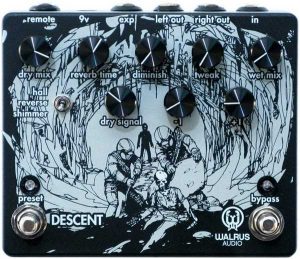 | Type: Digital Effects: Octave, Reverb | $300 | Read Full Review Below |
| 15. TC-Electronic Sub ‘N’ Up | 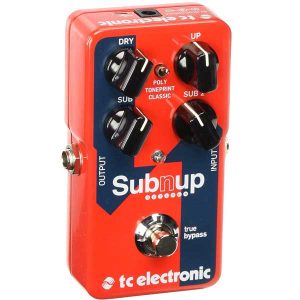 | Type: Digital Effects: Octave | $230 | Read Full Review Below |
| 16. Electro Harmonix Octavix | 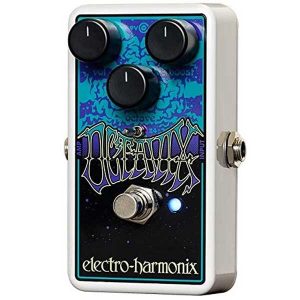 | Type: Digital Effects: Octave, Fuzz | $140 | Read Full Review Below |
| 17. Electro-Harmonix POG2 | 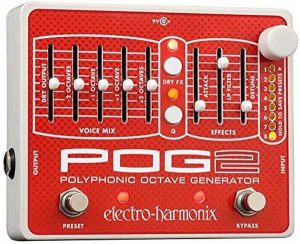 | Type: Digital Effects: Octave | $400 | Read Full Review Below |
Here Are The Best Octave Pedals
1. Electro-Harmonix Micro POG (Best Overall)
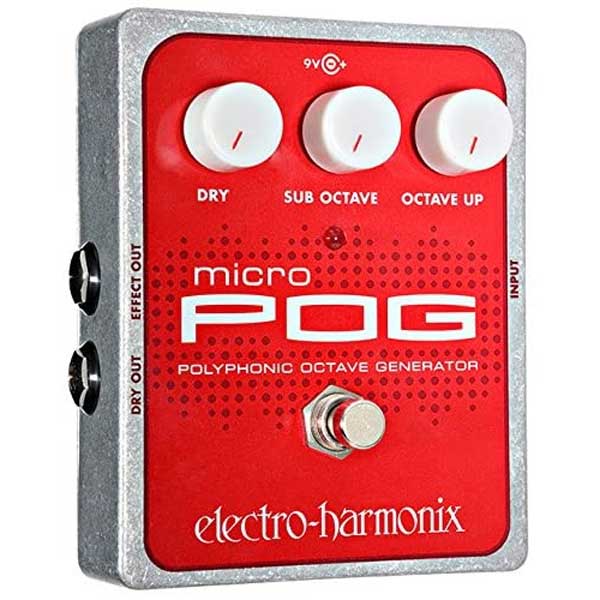
| Estimated Price | $280 |
| Type | Digital |
| Effects | Octave, Pitch Shift |
| Connectivity | 1 x 6.35mm Jack Input, 2 x Outputs |
| Power | 9 Volt |
My Review: The Micro POG (polyphonic octave generator) is a premium quality pitch-shifter pedal that combines simplicity with sonic versatility. Although it doesn’t have a multitude of controls or parameters, the Micro POG’s ability to produce thick, full-bodied octave tones is in my opinion unrivaled. I prefer it to the full-sized POG pedal because it slots onto your pedalboard without taking up much space, and is much more straightforward to use.
With the Micro-POG, you can transform your guitar into a 12-string or make it sound like an organ. The three controls are labeled as Dry, Sub-Octave, and Octave-Up. By adjusting this trio of parameters, you get complete control over the blend between the three octaves. You can either mix the three to add body to your tone or completely remove one of the octaves for a more extreme effect.
Adding the sub-octave into your clean guitar will make it sound more like a bass, and likewise, adding the higher octave to a bass guitar will make it resemble a six-string. For such a concise and simplistic pedal, it’s amazing how much tonal flexibility Electro-Harmonix has managed to cram in. There are also two outputs on the Micro POG, so you can use it to split your signal for a dual-amplifier setup.
Who This is Best Suited for: The Electro-Harmonix Micro POG is the perfect octave shifter pedal for guitarists or bassists who value simplicity. There’s no need to read the manual with this pedal, it’s very straightforward to use. Not to mention the tones it produces are huge and versatile.
Bottom Line: You know what you’re getting with an Electro-Harmonix pedal. Their quality is unquestionable, and the Micro POG further reinforces that notion. With a simple 3-control design that provides detailed octave options, this pedal is a brilliant addition to your setup.
2. Digitech DROP (Best Value)
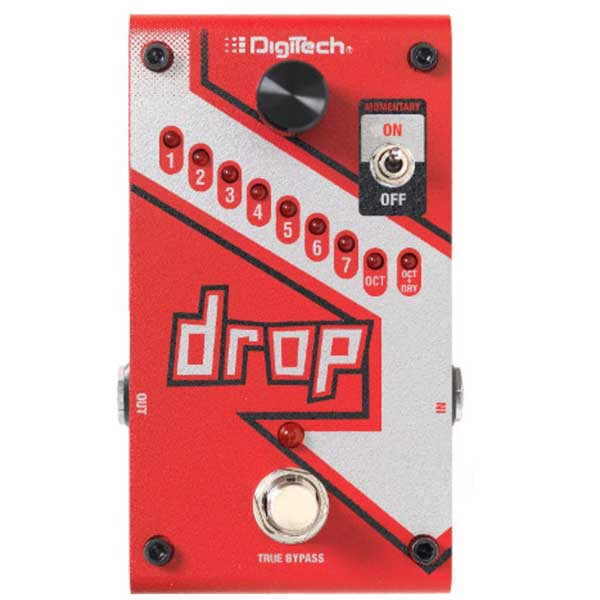
| Estimated Price | $215 |
| Type | Digital |
| Effects | Octave |
| Connectivity | 1 x 6.35mm Jack Input, 1 x Output |
| Power | 9 Volts DC |
My Review: Digitech’s Drop effects pedal produces precise pitch-shifting instantaneously when you step down on the pedal. It’s worth noting that the Drop can’t shift up an octave, as you can probably guess by the name. However, it’s unique functionality and flexibility when going down an octave is unrivaled. It’s the perfect pedal if you want to make your guitar sound like a bass, or add deep layers of thickness to your tone.
With nine individual settings providing you with 1-7 polyphonic semitones of drop-tuning, there’s an array of options included with this Digitech pedal. Additionally, there are multiple settings for tuning your guitar down by one octave, and you get to choose whether your dry signal remains present in the mix or not.
Perhaps the most innovative feature of the DigiTech Drop pedal is the miniature toggle switch. This gives you the power to set the footswitch to either tap or hold, basically controlling the amount of time that the down-tuning effect lasts for. With true-bypass switching, the Drop preserves your dry signal even when it’s unused.
Who This is Best Suited for: I would recommend the Digitech Drop to any guitarist who intends to add bass to their clean signal. If you’re in a two-piece with no bassist, this is the perfect option for adding low-end thickness into the mix. Also, it’s a great option for those who want to use the octave effect sporadically, as you can control the length using the footswitch rather than needing to tweak various parameters.
Bottom Line: The Digitech Drop specializes in down-tuning a guitar, so it’s not the right pedal for those who want to explore higher octaves. That being said, it’s a premium-level pedal that functions smoothly and provides many options based on pitch shifting down. The price is a little on the high side, but this is reflected by the quality and versatility that the Drop has to offer. Even with the slightly higher price tag, in my opinion, this is still the best octave pedal for the money.
3. Boss OC-5 (Best Under $150)
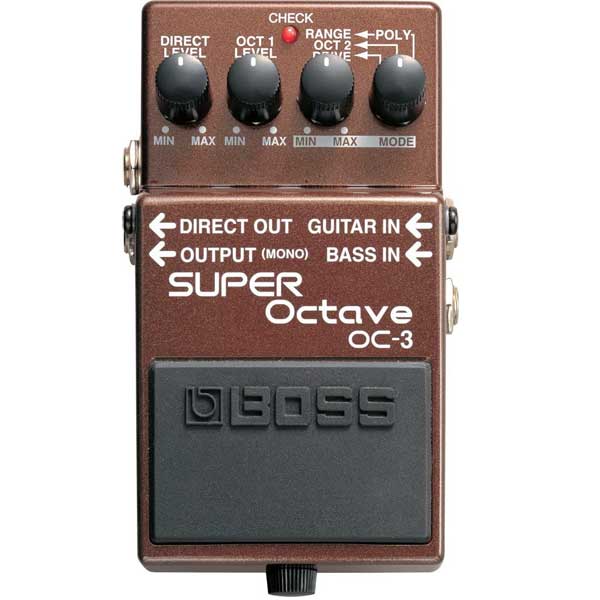
| Estimated Price | $135 |
| Type | Digital |
| Effects | Octave |
| Connectivity | 2 x 6.35mm Jack Input, 2 x Output |
| Power | 9 Volts DC |
My Review: The Boss OC-5 is more than just an octave pedal. With three specifically designed modes to choose from, you can shape the effect to your liking. It’s equally compatible with bass as it is with an electric guitar, too. The three selectable modes consist of Polyphonic Octave mode, Drive mode, and the original OC-2 mode.
Firstly, the Polyphonic Octave mode can be used to shift your guitar up or down by multiples of 12 notes, allowing you to play multiple notes or chords and still get the desired effect. The Drive mode is similar to the aforementioned Polyphonic Octave mode but with an added touch of distortion. This mode is especially effective when you are dropping down an octave with your guitar. Finally, we have the OC-2 mode, which has been uniquely devised by Boss and lets you go down an octave or two while retaining the clarity of your dry signal.
Who This is Best Suited for: The Boss OC-5 is best suited for multi-instrumentalists who play both guitar and bass. The added bass input is specifically for low-end octave effects. If you’re a fan of Boss’ range of easy-to-use, reliable pedals, I’d recommend the OC-5.
Bottom Line: Similar to the majority of Boss pedals, the OC-5 is durable, straightforward, and effective. With three built-in modes that each have individual characteristics, there’s plenty of room for experimentation with this affordable pedal.
Popular Related Article: Recommended Delay Pedals (Digital and Analog)
4. Neewer Digital Octave (Best Under $50)
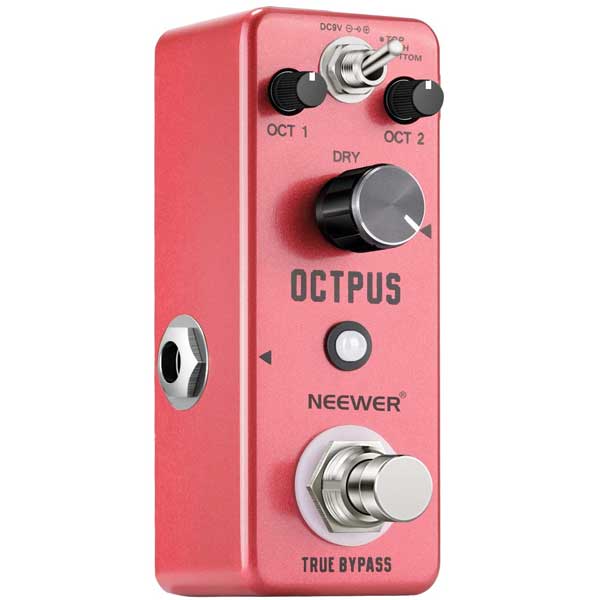
| Estimated Price | $40 |
| Type | Digital |
| Effects | Octave |
| Connectivity | 1 x 6.35mm Jack Input, 1 x Output |
| Power | 9 Volts DC |
My Review: It’s true that in most cases the price of an effects pedal is reflected by the quality, but at around $40, this Neewer Digital Octave pedal is a steal. There’s nothing flashy about this pedal, with three onboard knob controls and a switch. But sometimes, where effects pedals are concerned, simplicity is best.
The two small parameters positioned in the top corners of the pedal are for controlling the amount of the octave present. On the left, you have the sub-octave control, and parallel is the higher-octave. In the center of the pedal is the larger dry control, which affects the amount of your clean signal that is present in the overall mix.
With footswitch is fitted with true bypass technology, so there’s no danger of your dry signal being compromised when the pedal isn’t in use. The switch at the top center of the pedal allows you to quickly toggle through three modes, selecting the top octave, bottom octave, or a mixture of both. Indeed, it’s hard to believe that all of this is housed in such a compact pedal and for such a fair price.
Who This is Best Suited for: If you’re shopping for an octave pedal on a budget, look no further than the Neewer Digital Octave Pedal. It has all of the functions you need to add texture to your guitar tone, whether you want to add sub-octaves, shift your pitch up, or blend your dry signal to add thickness to your tone. It’s a small and concise pedal so it will have no problems slotting into a crowded pedalboard.
Bottom Line: A pedal that costs around five times less than the premium options on this list isn’t going to match their quality, but the Neewer Digital Octave Pedal certainly bridges the gap. With a variety of modes to choose from, true bypass switching, and a thick, warm tone, it’s certainly worthy of consideration.
5. Electro-Harmonix Pitch Fork
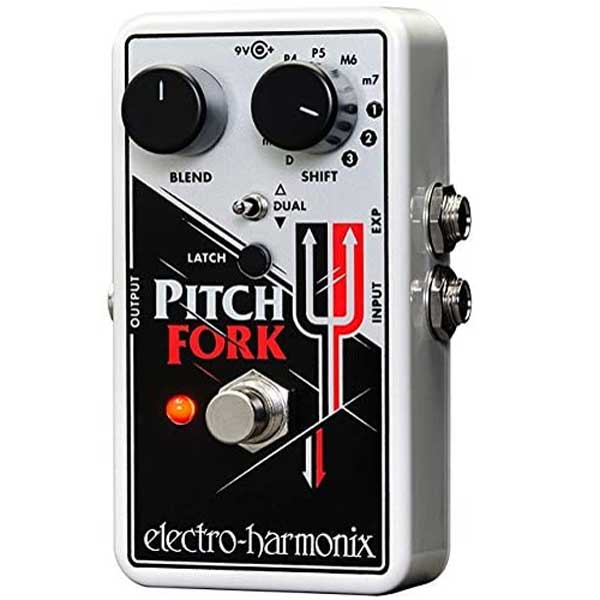
| Estimated Price | $175 |
| Type | Digital |
| Effects | Octave |
| Connectivity | 2 x 6.35mm Jack Input, 1 x Output |
| Power | 9 Volts DC |
My Review: Another offering from Electro-Harmonix makes it onto our list, this time we have the popular Pitch Fork. A high-quality polyphonic pitch shifter, this pedal provides you with the power to accurately shift your pitch to any chosen interval. Unlike a standard octave pedal, it can pitch-shift your note up by any amount of steps rather than only multiples of 12 (octaves).
The extreme side to the Pitch Fork pedal allows you to create weird and wonderful textures, making your guitar resemble an 18-string guitar or blasting atmospheric notes into the upper realms of sonic possibility. When combined with an expression pedal, the Pitch Fork begins to flourish. You can control the sweeps and octave-jumps by applying pressure to the pedal, for the ultimate psych-rock tone bending tool.
The Pitch Fork has an impressive three-octave range. It’s also guaranteed not to glitch even when you’re playing fast, technical licks, thanks to the digital mechanics designed by Electro-Harmonix. There’s a buffered bypass to ensure that your dry signal integrity is maintained, and the latch or momentary modes are useful for controlling the length of the pitch-shift effect in real-time.
Who This is Best Suited for: Guitarists who don’t want to be confined to simply shifting up in octaves. The Pitch Fork provides ultimate flexibility where tonality is concerned, allowing you to accurately choose the intervals that you want the pedal to produce.
Bottom Line: The Electro-Harmonix Pitch Fork pedal is a detailed option that goes beyond the capabilities of a standard octave pedal. With many different pitch-shifting options available, it can be used to find unique expressions and tones by toggling the onboard parameters. Hook up an expression pedal and you’ll see the Pitch Fork show its class.
Popular Related Article: Our Favorite Distortion Pedals
6. Digitech Whammy
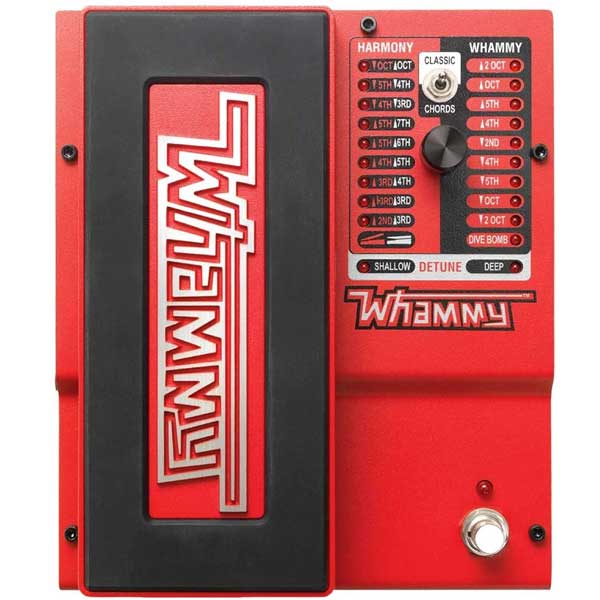
| Estimated Price | $220 |
| Type | Digital |
| Effects | Octave |
| Connectivity | 1 x 6.35mm Jack Input, 1 x Output, 1x MIDI Output |
| Power | 9 Volts DC |
My Review: The 5th generation of Digitech’s revered Whammy pedal features all of the classic elements that made this model so popular among guitarists, with some advanced updates taking it to the next level
With the famous expression pedal design, you get full control over the pitch shifting performance of the pedal, ranging from subtle and slow to crazy and manic.
The main improvement from the 4th edition of the Whammy pedal is the Classic/Chord switch. This polyphonic ability is a rarity on octave or pitch shifting pedals, allowing you to play triads or other chord shapes whilst modulating the pitch.
The Whammy pedal allows bassists or guitarists to shift their instruments pitch up by two octaves. Several intermediate intervals can be selected too, like 5ths or 3rds, so you can create harmonies along with the standard octave shift effect. The purity of the guitar’s clean tone is preserved by the addition of true bypass switching. Finally, the Whammy has a high-quality 24-bit set of converters to ensure clean pitch bending with no blemishes.
Who This is Best Suited for: Fans of Jack White’s guitar playing in the White Stripes will love the Whammy pedal. If you need to stand out on stage and draw attention to your solos or riffs, the Whammy’s unique bending tones will certainly turn some heads towards you.
Bottom Line: The Whammy pedal by Digitech could almost be classed as an individual effect because although it’s technically a pitch-shifter, it has an instantly recognizable one-of-a-kind sound. With numerous intervals to choose from and the classic expression pedal design, this pedal is an absolute joy to play with. This is easily one of the best octave pedals out there.
7. Koogo Harmonizer
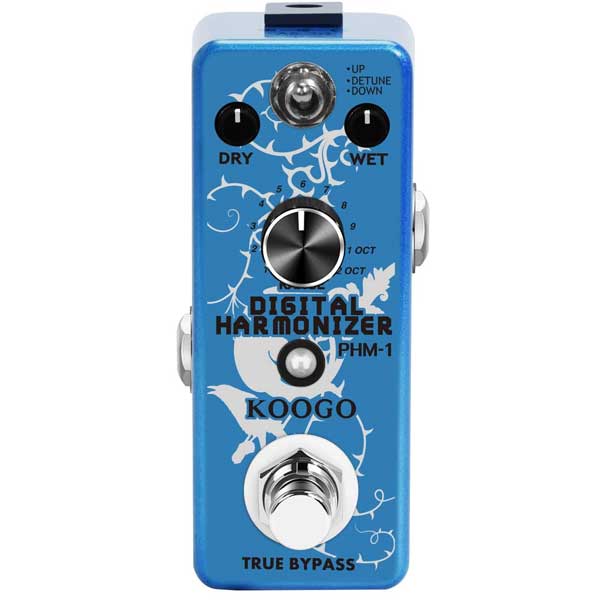
| Estimated Price | $45 |
| Type | Digital |
| Effects | Octave |
| Connectivity | 1 x 6.35mm Jack Input, 1 x Output |
| Power | 9 Volts DC |
My Review: The affordable Harmonizer pedal by ever-improving FX manufacturers Koogo is a straightforward option that produces reliable octave shifting for a guitar or bass. With a simplistic three-parameter design, this pedal allows you to choose between 11 intervals to create harmonies with your guitar notes. These intervals go up in semitones, making it possible to produce dissonant combinations of notes or more ear-friendly harmonies.
In the center of the pedal is a switch that toggles between Up, Detune, and Down. The Up/Down controls are self-explanatory, allowing you to shift a whole octave in either direction. The Detune control is more experimental, letting you choose the exact interval and pulling the pitch of your instrument down in that direction.
Who This is Best Suited for: The Koogo Harmonizer is recommendable to any guitarists who like their pedals to be quick and easy to navigate, but still want an array of sonic sculpting options available to them.
Bottom Line: For less than $50, the Koogo Harmonizer pedal is great value for money. This compact stompbox has 11 intervals to choose from, so you can create pleasant-sounding overtones or destroy your tone with atonal harmonies. The selectable switch is a useful addition that allows you to quickly toggle through the settings and change the characteristics of the pedal.
Related Article: The Best Fuzz Pedals Currently on the Market
8. Ammoon Precise Octa
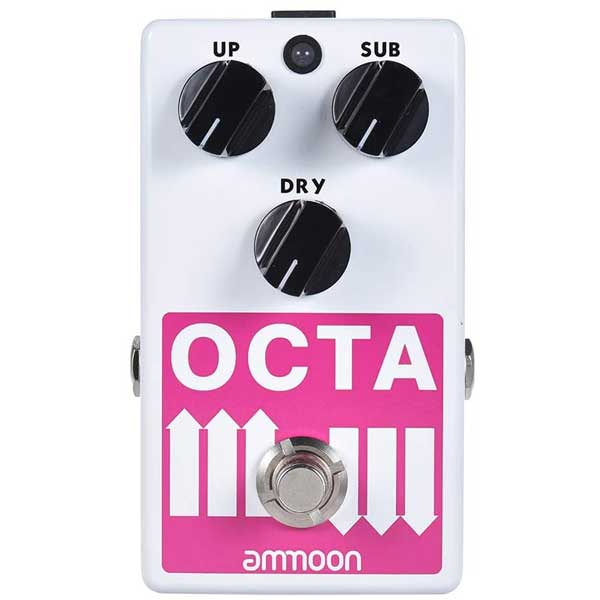
| Estimated Price | $70 |
| Type | Digital |
| Effects | Octave |
| Connectivity | 1 x 6.35mm Jack Input, 1 x Output |
| Power | 9 Volts DC |
My Review: Newly established pedal producers Ammoon has quickly forged a reputation for their affordable, high-performance FX stompboxes. The Precise Octa is a polyphonic octave generator featuring a minimalist three-knob design allowing you to add or remove higher octaves, sub octaves, or dry signals. Alternatively, if you prefer then you can blend the three controls to add textures to your clean guitar sound.
With impressively fast-tracking, there’s no chance of the pedal causing your signal to glitch out, as can be the case sometimes with digital octave effects. The dry through signal is fully analog, so you don’t lose any of your instrument’s natural sound.
With a high-quality true bypass footswitch, the Ammoon Precise Octave pedal provides

My name is Chris and I’ve had a passion for music and guitars for as long as I can remember. I started this website with some of my friends who are musicians, music teachers, gear heads, and music enthusiasts so we could provide high-quality guitar and music-related content.
I’ve been playing guitar since I was 13 years old and am an avid collector. Amps, pedals, guitars, bass, drums, microphones, studio, and recording gear, I love it all.
I was born and raised in Western Pennsylvania. My background is in Electrical Engineering, earning a Bachelor’s degree from Youngstown State University. With my engineering experience, I’ve developed as a designer of guitar amplifiers and effects. A true passion of mine, I’ve designed, built, and repaired a wide range of guitar amps and electronics. Here at the Guitar Lobby, our aim is to share our passion for Music and gear with the rest of the music community.
